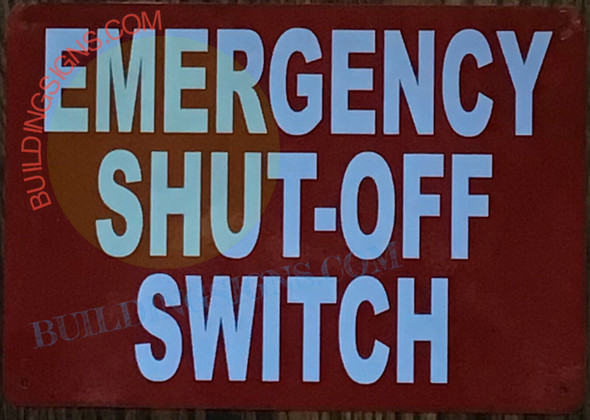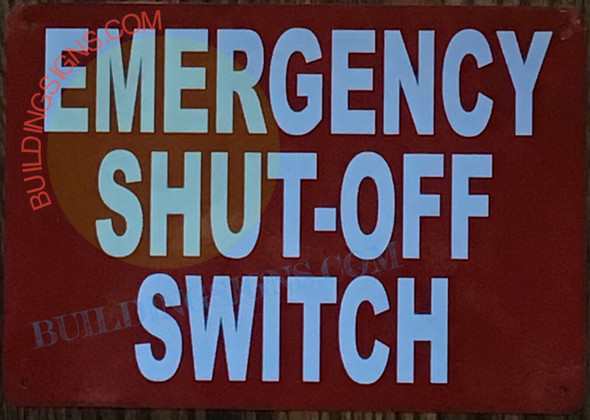FIREDEPARTMENTSIGNS.NYC
EMERGENCY GAS SHUT OFF SIGN (7X10,Red,Aluminum)
- Availability:
- Usually Ship Within 2 days
Description
EMERGENCY GAS SHUT OFF SIGN Size 7 Inch x 10 Inch Sign Thickness 0.4MM Sign letters color: White Sign background color: Red Sign . Sign material: Aluminum. Reflective Sign
A "Gas Shut Off" sign is a safety sign that is used to indicate the location of the gas shut-off valve in a building. The valve is responsible for controlling the flow of natural gas or propane to the building in case of an emergency, such as a gas leak or fire.
The sign should be placed near the gas shut-off valve, in a location that is easily accessible and visible, such as near the entrance to the building or in a common area. The sign serves as a reminder to people of the importance of knowing the location of the gas shut-off valve and the significance of the valve in case of an emergency.
In the event of a gas leak or fire, the ability to quickly and efficiently shut off the flow of gas can help prevent further damage and protect the safety of building occupants. It is important for building occupants to be aware of the location of the gas shut-off valve and the significance of the sign, as this knowledge can be critical in the event of an emergency.
A gas shut off valve sign is a type of safety sign used in buildings to identify the location of gas shut off valves. Gas shut off valves are used to control the flow of gas to appliances and other gas-using equipment in the building. The purpose of a gas shut off valve sign is to provide clear and easy-to-read information to building occupants and emergency responders about the location of gas shut off valves.
The design of a gas shut off valve sign must meet specific standards and regulations set by governing bodies such as the American National Standards Institute (ANSI) and the International Building Code (IBC). The sign must be easily visible, with clear and legible text, and it must use symbols and graphics that are universally recognized.
It is important for building occupants to be aware of the location of gas shut off valves in the event of a gas leak or other emergency situation. In such cases, turning off the gas supply can help to prevent fire, explosion, or other hazardous conditions. Building occupants should be familiar with the operation of gas shut off valves and should know how to turn off the gas supply in the event of an emergency.
In addition to being aware of the location of gas shut off valves, it is important to regularly inspect and maintain the valves to ensure they are in good working condition. This includes checking for signs of corrosion or damage, and testing the valves to ensure they can be easily turned on and off. If any problems are detected with the gas shut off valves, they should be repaired or replaced as soon as possible to ensure they are functioning correctly and to ensure the safety of building occupants and emergency responders. Regular maintenance of gas shut off valves is an important aspect of overall building safety and helps to ensure the safety of building occupants and emergency responders.
DISCLAIMER These codes may not be the most recent version. The State / federal or other regulation department may have more current or accurate information. We make no warranties or guarantees about the accuracy, completeness, or adequacy of the information contained on this site or the information linked to on the state site. Please check official sources. The requirements for sign content are determined by intended use and by applicable regulation. The BUYER is responsible for determining the appropriate content for a sign or package of signs. WE make no warranty or representation of suitability of a sign for any specific application. IT IS THE CUSTOMER'S RESPONSIBILITY TO ENSURE THAT THE SIGNS THE CUSTOMER ORDERS ARE IN COMPLIANCE WITH ALL STATE, FEDERAL, LOCAL, AND MUNICIPAL LAWS. Please review terms and conditions prior to purchase. For more information about what is required, see the laws that are referenced and the rules applicable to your city and state. This page is for informational purposes only and is not intended as legal advice, professional advice or a statement of law. You may wish to consult with an attorney








































